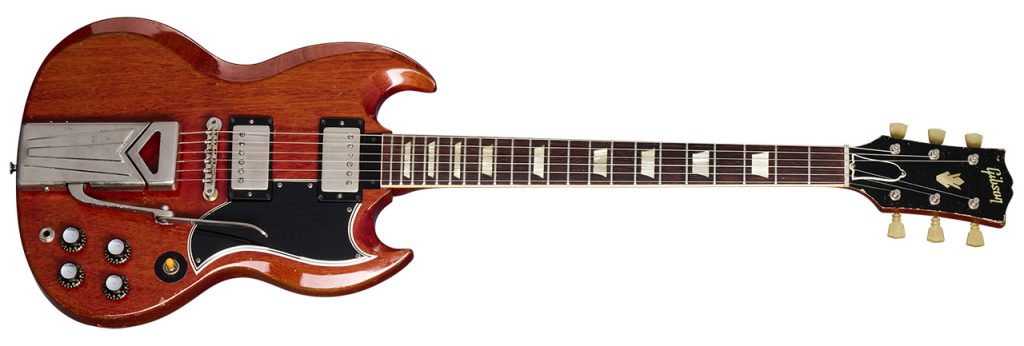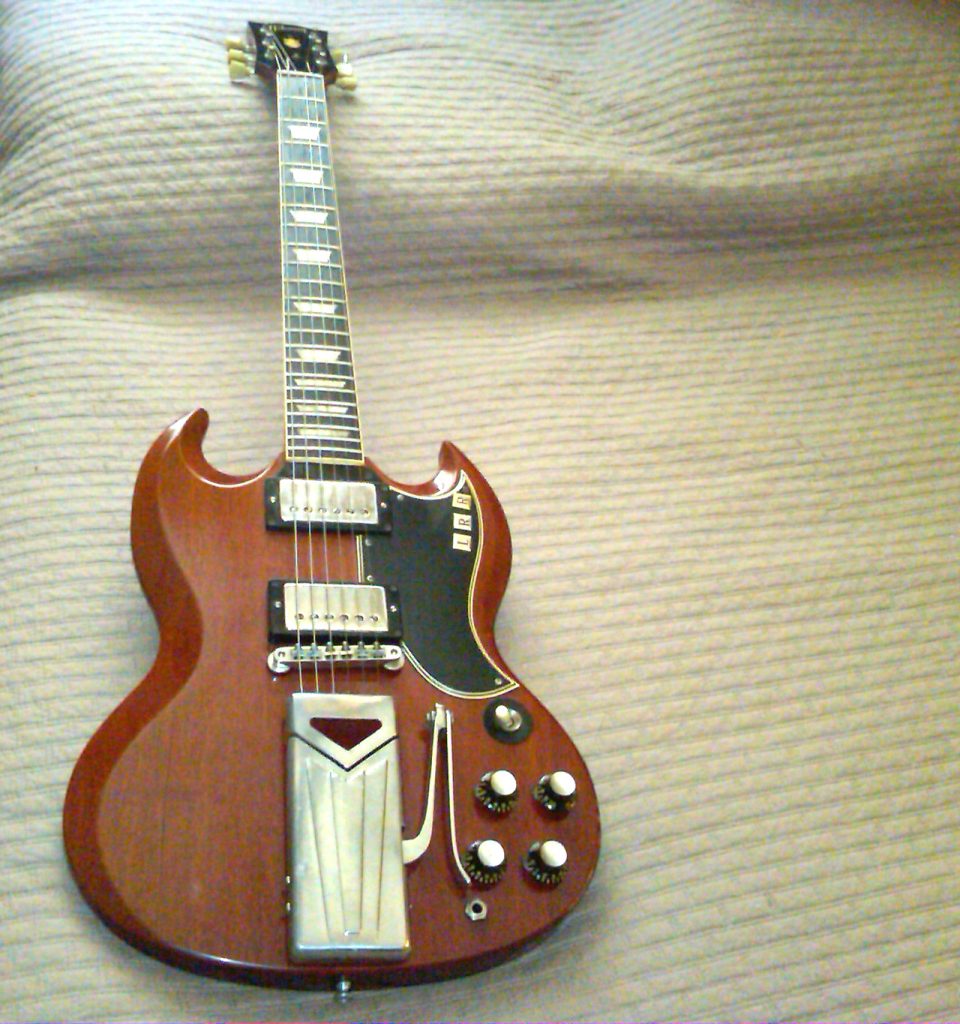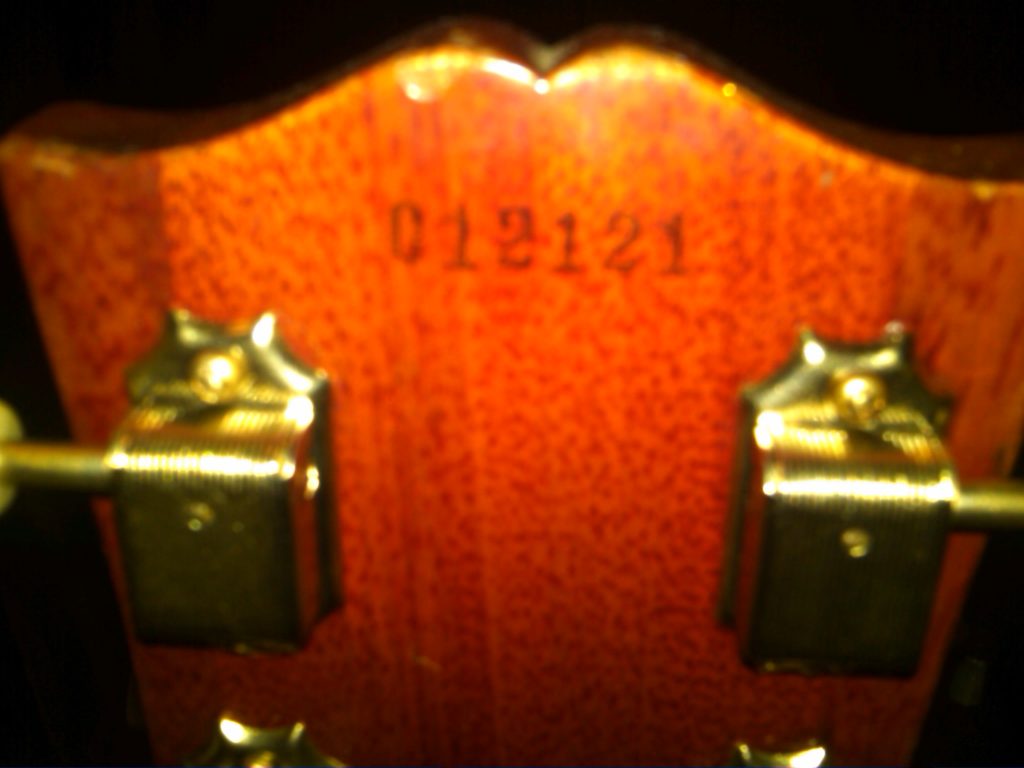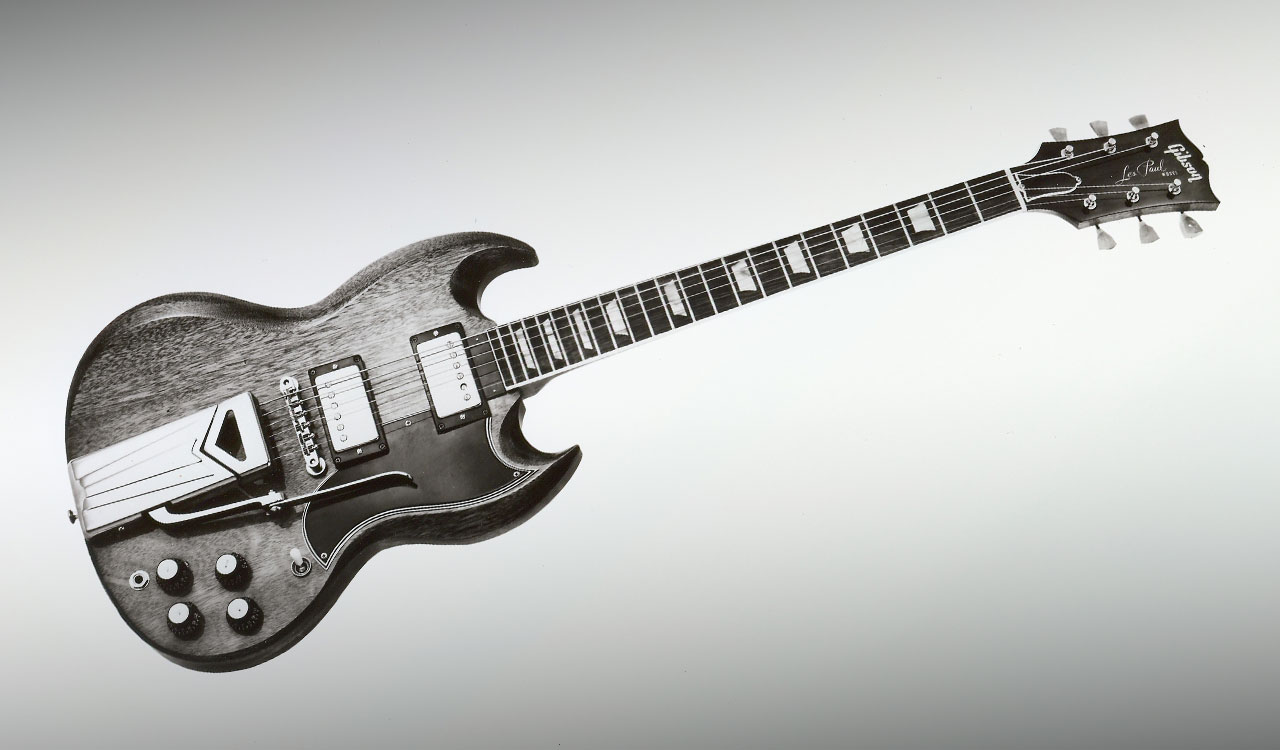The tale of how a mysterious vintage Gibson SG was really a 1960 Gibson Les Paul Standard all along
In the spring of 2012, one of my uncles reached out in search of information about a vintage Gibson guitar he had inherited from a close friend. Who else wants a close friend like that? Yeah, me, too! My uncle always loved his Gibsons and learned to play guitar in retirement.
I’d played this particular instrument before, and it presented as an old SG™ with a Cherry finish, sideways Vibrola™, and a modest patina. Touched by time, sweat, and the tiniest amount of expected wear, it was clearly a well-looked-after vintage instrument. It was light, balanced, and had great action. His friend’s initials were stuck onto the pickguard using the kind of tiny plastic letters one would use to put a name or numerals on a school locker many years ago.
We didn’t suspect at the time that it was a 1960 Les Paul™—it seemed the truss rod cover had probably been lost and replaced at some point early on. I knew the history of the Les Paul and the SG, but during that point in the sleuthing process, we didn’t suspect that it was one of the very first Gibsons to have the revolutionary SG body shape. For that to be true, I would have expected a horizontal rendering of “Les Paul” on the truss rod cover, aligning with my own Gibson Custom ’61 Les Paul reissue from 2000, but there’s more than meets the eye about these early models.

Image: The late Jefferson Preston Burnett, US Army veteran and Gibson guitar lover
My uncle knew with certainty that his guitar had been purchased as a used instrument in 1964, but that was all the personal knowledge we had to go on. I don’t think it had an original case, and now I cannot confirm that since he’s already passed away. Sadly, the same kind of brain cancer that claimed the life of Rush’s Neil Peart also took my uncle. He had surgery, and within a week, complications suddenly snatched him away. Nobody saw it coming.
While we were still discussing the origins of this guitar, he’d texted me and said, “Sending a couple more pics to your email. You are welcome to use any pics as you see fit, by the way. No, the plate doesn’t have anything written on it, and the truss rod cover looks to be original—if not, it sure matches everything else. The plastic tuner handles have been replaced due to being very hard to turn. However, we still have the old ones.”

Image: An original 1960 Les Paul Standard in original condition. The catalog image of the prototype model can be seen at the top of this article, complete with Les Paul silkscreen, a feature that changed on later examples
Quite honestly, I’ve never been able to figure out Gibson’s serial numbers without help. The serial number is 012121, and searching online made it seem like it might be the serial for a 1967 model, which we knew wasn’t possible. It had to be an earlier model. The investigation continued, and I waited for pictures to arrive, since I had no reliable memory from when I played it regarding the important physical details.
I needed more knowledge, so I contacted Bradley Cecil, the Consumer Service Supervisor at Gibson. When in doubt and need of expertise, contact Customer Service! With a bare modicum of information from me and newly arrived pictures, he responded, “Wow, yeah, that’s really cool. The number looks like it’s ink-stamped. Usually when someone mentions a 60s solidbody with a six-digit number, the assumption is that the number is stamped into the wood and follows the list we have for numbers from ’61-70.
“This is almost always the case. The exception is 1960, when we were still using the 50s-style serial number, which is an ink-stamped five-digit number (X XXXX), except in the later part of each year when we moved to six digits (XXXXXX). In those numbers, the first digit matches the last digit of the year of manufacture. So, in late 1960, a solidbody guitar would have ended up with a six-digit number starting with a zero. This number would show up again in 1967, but it would look different then.”

Image: My uncle’s 1960 Gibson Les Paul Standard, complete with his friend’s initials on the pickguard
In a follow-up conversation, Bradley relates, “Like I said, those early SGs have a very specific look, there are a few things that we never did again on SGs. So being able to see the guitar narrows it down really quickly, even if the number doesn’t quite match. But in this case the number matches perfectly, and the guitar looks like it should with regards to specs. Really, really cool—and in great shape, too.”
I ask Bradley to confirm that the guitar is a 1960 model, presumably from late in that year. “Yeah, it would have to be,” he says. “Not just because of the number, but also because SGs didn’t exist prior to the latter part of that year. Les Pauls were still Les Pauls in 1960; they didn’t change to the SG body shape until very late in the year. So this is one of the very first Les Paul SGs. Those are dangerous words, by the way—they make it sound like it’s one of a few when I really can’t confirm that. But it’s certainly among the first ones of however many were made. Very cool.”

Image: A blurry record of the ink-stamped serial number that helped identify this 1960 Les Paul Standard
Cool, indeed. Regarding my uncle’s guitar, Gibson Vice President of Products Mat Koehler speculates, “I believe this would have been from the third and final SG Les Paul Standard ‘batch’ made in 1960, based on my limited understanding of the production timeline. Everything I know is based on known examples only—we do not have the 1960 shipping ledger book to reference. My personal estimate is that those batches consisted of 20-40 instruments each. So, possibly as few as 60 ink-stamped SG Les Paul models exist.”
Of course, my uncle was thrilled to learn what we uncovered, texting me saying, “Did I read it right—this is actually a 1960 year model? Dang! I really appreciate your help on this. More to tell you about it in person. You can’t believe how excited I am right now. I’m going to have to call a cousin in Arizona and tell him about this. He loves to play this guitar.”
We did some more research and Gruhn Guitars in Nashville had a few similar instruments tucked away. The asking prices were fairly high, and I think learning this was the main motivation for my uncle to put the guitar back into the hands of his friend’s family. In the end, a very special and rare guitar found its way home in a circle of generosity and care.
Shop our range of Gibson SG models or spec the vintage-style Gibson SG of your dreams via the Gibson Custom Made to Measure program.

